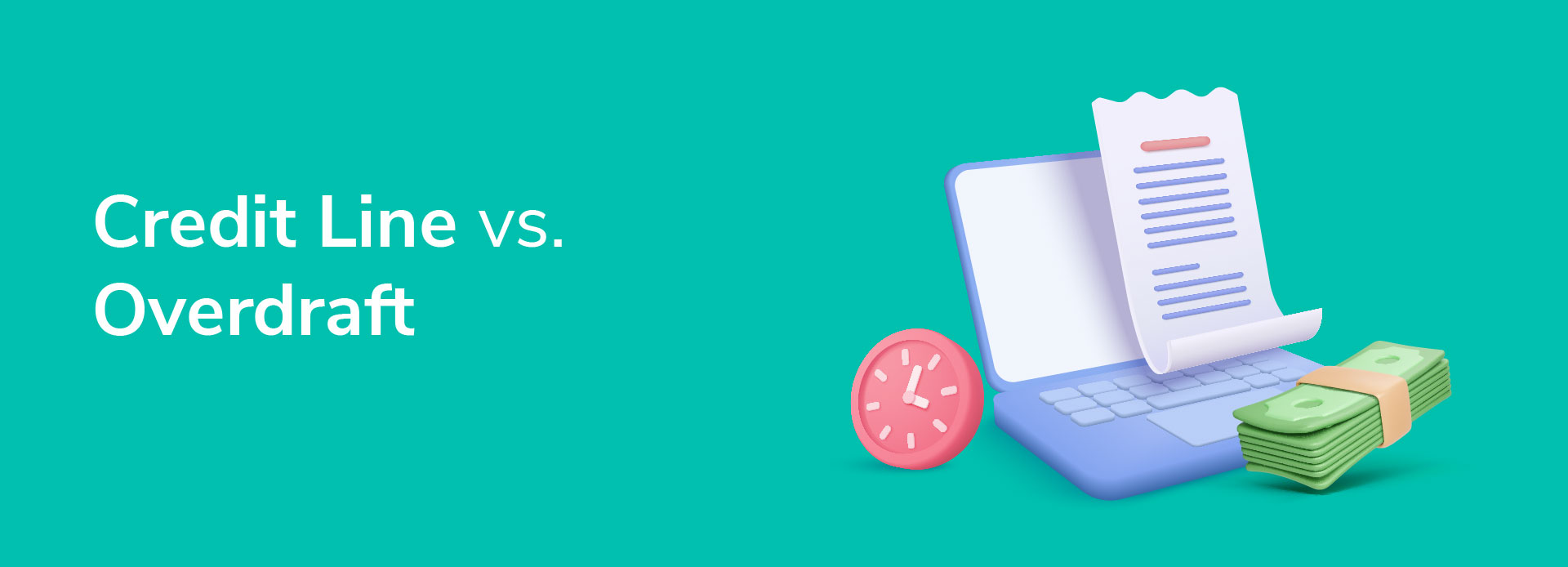
Credit Line vs Overdraft: What Suits Your Needs Better?
09 April 2024 | By INDIE
Credit lines and overdrafts are two popular options for accessing cash when you need it. A credit line allows you to borrow money up to a predetermined limit whenever and wherever you need it. At the same time, an overdraft lets you withdraw more funds than you have in your account up to a certain limit. Both credit lines and overdrafts come with fees and interest charges. It's important to read the fine print and understand all the terms and conditions of each option before deciding. Here, we map out the differences between the two.
Benefits of Using a Credit Line over an Overdraft
A credit line and an overdraft are both financial tools that provide flexibility in managing short-term funding needs, but they work differently. Here's a detailed section outlining scenarios where a credit line would be the preferred choice:
Long-Term Financing Needs:
If you anticipate the need for funds over an extended period, a credit line is a more suitable option. Credit lines often come with more extended terms compared to overdrafts, making them ideal for ongoing or recurring financing needs.
Lower Interest Costs for Larger Borrowing:
For substantial borrowing requirements, a credit line may offer a more cost-effective solution. Credit lines often have lower interest rates compared to overdrafts, making them preferable when the amount needed is significant. This can result in substantial interest savings over the life of the borrowed amount.
Structured Repayment Plans:
If you prefer a structured repayment plan with fixed monthly payments, apply for a credit line. It is the most appropriate choice for you in that situation. Credit lines often allow for more flexible repayment terms, providing you with the ability to choose a repayment schedule that aligns with your goals.
Larger Credit Limits:
With INDIE My Credit Line, you can get up to ₹5 Lakh in your account anytime, with multiple drawdown options. It is ideal for individuals with significant financing needs.
Diverse Usage Scenarios:
Credit lines can be used for various purposes, including working capital, equipment purchases and business expansion. They provide a versatile financial tool that adapts to different funding needs.
Also Read: Is a Line of Credit worth it? Factors to consider
Benefits of Using an Overdraft over a Credit Line
Here's a detailed section outlining scenarios where an overdraft would be the preferred choice over a credit line:
Immediate and Short-Term Cash Flow Needs:
Overdrafts excel at providing immediate access to funds when facing short-term cash flow challenges. Suppose you require a quick injection of funds to cover unexpected expenses or bridge a temporary gap. An overdraft is a more immediate solution compared to the application and approval process associated with a line of credit.
Flexible Usage for Various Expenses:
Overdrafts can be used for a variety of expenses, including bill payments, supplier invoices or any unforeseen costs. The flexibility of overdrafts makes them suitable for managing day-to-day financial needs without being tied to a specific purpose.
No Fixed Repayment Schedule:
Overdrafts offer flexibility in repayment as they typically don't come with a fixed schedule. You can repay the overdraft amount as and when funds become available, making it ideal for those who prefer a less structured repayment plan.
No Setup or Commitment Fees:
When considering options for your funding needs, it's important to research and compare different products. Some banks may offer overdraft facilities that may better suit your requirements.
Occasional or Unpredictable Usage:
If your financial needs are occasional or unpredictable, an overdraft may be more suitable. Unlike a credit line, which may have a commitment period, an overdraft can be used sporadically without an ongoing financial obligation. It provides more flexibility for those with intermittent funding requirements.
Here's a quick review:
| Criteria |
Overdraft |
Credit Line |
| Purpose |
Short-term, immediate cash flow needs |
Long-term financing needs; structured financing |
| Repayment Schedule |
Flexible; no fixed schedule |
Structured; may have fixed monthly payments |
| Usage Flexibility |
Suitable for various day-to-day expenses |
More extensive and diverse usage scenarios |
| Costs and Fees |
Lower upfront costs; no setup or commitment fees |
May have higher upfront costs and commitment fees |
| Accessibility and Approval |
Quick approval, immediate accessibility |
May involve a more extended application and approval process |
| Credit Requirements |
Potentially less stringent credit checks |
May require a more robust credit history |
| Interest Rates |
Typically, higher interest rates |
Often lower interest rates, especially for larger amounts |
| Credit Limits |
Lower credit limits compared to credit lines |
Higher credit limits, suitable for substantial financial needs |
| Structural Commitment |
No ongoing commitment, suitable for occasional or sporadic use |
Involves a commitment period, which is better for continuing and planned needs |
| Emergency Buffer for Checking Accounts |
Acts as a buffer to prevent declined transactions and fees |
May not be directly linked to checking accounts |
Conclusion
Both credit lines and overdrafts can be valuable tools for managing short-term financing needs. However, the choice between the two depends on your specific financial requirements. It's important to weigh the pros and cons of each option carefully and choose one that aligns with your goals. Regardless of the type of financing you choose, it's crucial to keep an eye out for investment opportunities that can help grow your wealth. By making wise investment decisions, you can maximize your returns and achieve your financial goals faster.





